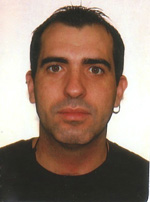PLATFORM
Violent firearm-related deaths in Brazil

Aritz García
In light of the negotiations towards an international Arms Trade Treaty, it appears interesting to show the situation in Latin America's largest country. What are the trends based on the age, area, skin colour or the social class of the Brazilian population?
In Brazil, the issue of violent, firearm-related death became particularly serious from the late 70s and early 80s. The number of gun deaths thus soared from 8,710 in 1980 to 38,677 in 2010. This represents an increase of 346.5%, when the population grew by 60% over the same period.
If we break down the data by type of violent gun-related death, we find that the rate of accidental deaths fell by 8.8%, while suicide rates increased by 46.8%. At 502.8%, the largest increase was seen in homicides rates. If we break down our analysis further still, we find that the biggest increase occurred among young people. Homicides among young people aged between 15 and 29 increased by 591.5%.
A separate indicator is the rate of firearm-related mortality (deaths per 100,000 population). Here we can see how it grew from 7.3 in 1980 to 20.4 in 2010, the rate among those aged 15 to 29 years increasing from 12.8 to 44.2. It is interesting to note how this rate, which reached its peak in 2003 with 22.2 in the general population and 46.5 among young people, declined somewhat thereafter and may have stabilised in the years that followed as a result of the disarmament campaign. However, the study by Mapa de Violência, Mortes matadas por armas de fogo[1], dare not directly link this stabilisation with the campaign, as significant oscillations were observed in subsequent years.
This same study points out violence hotspots in certain areas:
- New interior growth poles. Areas of economic investment which attracted high volumes of residents, overwhelming public safety services.
- Border towns. Located on strategic border points where the smuggling of weapons, drugs and other products is established.
- Municipalities of the Amazon's 'Arc of Deforestation' Where fazendeiros (farmers) and mineradores (miners) make their own rules, above the public law and with the complicit silence of politicians, with violent practices such as slave labour, the "vacation" of lands and extermination of indigenous communities, or the illegal trafficking of tropical timber.
- Areas of predatory tourism. Located on the coast, close to big cities like São Paulo, with incoming weekend tourism and high rates of armed violence linked to this weekend population.
- Areas of traditional violence. These include the 'Triângulo da Maconha' ('cannabis triangle') in Pernambuco and political patronage areas, a phenomenon called 'Coronelismo' (the 'rule of the coronels'), where violent fazendeiros exert tight control over the population.
In addition to these notes by area and age group, there are also major differences based on gender and skin colour. Thus, we found that men accounted for 93.9% of all firearm deaths. In addition, half of all gender-specific killings were carried out by firearms; of the 4,000 women killed in Brazil per year, 2,000 were gun-deaths.
Another interesting note was skin colour, which can be equated with social class. In 2010, the number of gun-deaths among black citizens was twice as high as in the white population. This skin colour-based victimisation process has been on the increase. Since we have had access to public, skin colour-specific statistics[2] (2002), we have found that the number of deaths increased from 9,710 in the white population vs. 16,083 in the black population in 2002 to 6,503 whites vs. 19,840 blacks in 2010. The ratio of deaths in the black vs. the white population, or victimisation, soared from 65.8% more blacks than whites in 2002 to 205.1% in 2010. This statistic is accentuated in states such as Alagoas and Paraíba where it reaches 1700%: states where "Coronelismo" and the class/colour relationship are more pronounced.
It is worth pointing out that 72% of the firearms used in homicides in Rio are stolen goods, and that 28% came from illegal arms trafficking[3].
And finally, it is worth mentioning potential non-public agreements with criminal groups. In this regard, the two main criminal groups are the Comando Vermelho in Rio and the PCC in Sao Paulo. In the article entitled Vinte anos de PCC en São Paulo: o espaço entre governo e crime ('Twenty years of PCC in Sao Paulo: the space between government and crime'), published in Le Monde Diplomatique Brazil, Gabriel de Santis Feltran[4] points to the agreement/disagreement between the government and the PCC as the cause for the decrease in the rate of homicides in São Paulo after the "war" period in 2006 and the last quarter of 2012 in the State of São Paulo. No such decrease can be observed in Rio, where it seems that plans for pacification through spectacular operations involving the military occupation of favelas by Pacifying Police Units did nothing but shift violent groups from the morros (slums) in the centre to the favelas on the outskirts in preparation for the Olympics and the property development bubble[5].
[1] Waiselfiz, Julio Jacobo. Mortes matadas por armas de fogo. Mapa de violencia 2013. Centro Brasileiro de Estudos Latino-Americanos, FLACSO. Can be found on: http://mapadaviolencia.org.br/mapa2013_armas.php
[2] Waiselfiz, Julio Jacobo. A cor dos homicídios no Brasil. Mapa da violência 2012. Centro Brasileiro de Estudos Latino-Americanos, FLACSO. Can be found on: http://mapadaviolencia.org.br/mapa2012_cor.php
[3] http://veja.abril.com.br/idade/exclusivo/armas_fogo/contexto_armas.html
[4]De Santis Feltran, Gabriel. Vinte anos de PCC en São Paulo: o espaço entre governo e crime. Le Monde Diplomatique Brasil, fevereiro 2013.
[5] Machado Da Silva, Luiz Antonio. O controle do crime violento no Rio de Janeiro. Le Monde Diplomatique Brasil, fevereiro 2013.